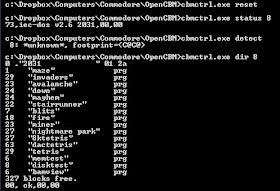This is an old post, preserved for reference.
The products and services mentioned within are no longer available.
I have two very different PCs on the bench today, and it's interesting to see just how different. The one on the left is one of my custom built PCs I'm just putting together. The one on the right is a generic off the shelf HP unit. Prices for the custom ones start around £400, The HP one would cost around £300. So what do you get for the difference in price, which one would you like?
From the front, the two look fairly similar, smart black cases, one badged Fractal, and one HP. One matt, one shiny (both with finger marks). Both have DVD RW drives, the one on the HP is hidden behind a flap. They both have two audio jacks, and two USB, the custom one has one USB 3.0 and one USB 2.0, the HP has both USB 2.0. It also has an SD card slot.
From the back, the difference is a lot more noticeable. There seems to be a lot of sheet metal on the HP on the right, and lots of mesh on the custom one on the left.
Looking at the custom built one in detail, on the rear is the mains input and power switch, then an I/O plate with a PS/2 port for anyone planning to keep an older style keyboard, four USB 2.0, two USB 3.0, gigabit LAN, SPDIF, four display options: HDMI, Display Port, VGA, and DVI, and six audio jacks. There are also four expansion slots, and there will also be a Windows 7 licence sticker going on there.

Inside, there is lots of opportunity for expansion, PCI express 3.0x16 slot, two PCI express 2.0 x1 and one PCI express 2.0 x8 slot. There are also a lot of additional power supply cables hidden in the spare drive bay, and the 430 Watt supply has much extra capacity. The processor is a Haswell i5, these are very solid chips with build in memory controllers and fairly decent on board video. The storage is a 250GB SSD, making full use of the SATA 3.0 on the mainboard at up to 560MB/s. Two of the four RAM slots are filled with 4GB DDR3-1600 sticks, these run in dual channel mode, so I'm getting a memory access speed of 18391 MB/s in memtest.

There are headers for additional SATA 3 hard drives, and header for extra USB ports, even parallel and serial if required. Cooling is via the intel stock cooler, which is fine for these modern intel processors as they just don't get that hot even at full pelt. There is also a 120mm case fan balancing the air flow with the 120mm fan on the PSU, giving neutral pressure in the case, reducing dust build up.
Looking in detail at the HP, it's a little different. No mains input, as it actually uses a 90W laptop style power brick. That does get a bit warm as it was drawing about 80W in use. It may be the mechanical hard drive making the difference, the custom one draws about 40W.
The other connections on there are two video options (DVI and VGA), four USB 2.0, gigabit LAN and three audio ports. Inside, it is fairly empty, although the case looked like it could accommodate a standard power supply and PCI expansion cards, inside it is clear it doesn't.
There is a mini PCI Express socket, with a WiFi adapter installed, but other than that, no opportunity to expand. The processor is the older Ivy Bridge i3, but at least it is an intel, most of the cheaper units use AMD chips, and I see lots of dead AMD laptops, so I'm not a fan. There is a single stick of DDR3-1600 RAM running in single channel mode, so it scores 9425 MB/s in memtest (half the speed of the custom one in dual channel mode).
The hard drive is mechanical 1TB drive, reading at about 80 MB/s. Most people seem to only use a few hundred GB at most, so the money would be better spent on a smaller but considerably faster SSD (about 560MB/s). HP have used their traditional slightly rotated Cooler Master heatsink and fan, and a rear 120mm fan. This arrangement pulls air into the case where ever it can, which is why you get dust build ups around any gaps or holes in the case.
Printers have become pretty much disposable items, this looks like they want PCs to go the same way. The HP board is non standard style, so it will be difficult to replace in the future. The case has 'security' screws in case you wanted to go inside, but they are just T15 and there is usually a full set of TORX bits in all these 101 bit screwdriver sets these days. So it seems to be designed to be plugged in and used and then thrown away in a couple of years time without ever being opened. That may be what people want?
When I build a custom PC, it has thumbscrews on the case, feel free to look inside. I like to do a proper job of cable management and a tidy case makes for better air flow. I use good quality, reliable parts, these all have at least three year warranties, and are standard sizes and easy to replace or upgrade in the future and to should last a long time. The system runs cool and quiet, and with the lots of RAM in dual channel mode and an SSD, very fast.
The HP is in for repair two months after the 30 day Argos warranty expired.
So which one do you want?
2022 Update: I wonder if either of these is still in use. I know which one my money would be on

























































